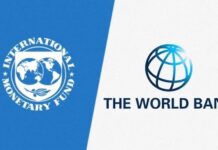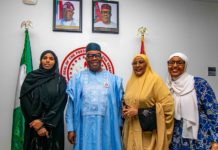Mohamed Ismail Yasin travelled 600 km to reach the sand dam near Bandarbeyla, in the Bari region of Somalia. He came with six members of his family and all the livestock they could bring.
“I came from Mayle district,” Mohamed recounts. “We fled from the drought in the region. The livestock that we brought here got pasture, and today we brought them to the water dam to give then water.”
The sand dam is one of the water harvesting structures built by UNDP in partnership with the Global Environment Facility. It aims to reduce the impacts of climate change-induced disasters like droughts and floods.
It’s the nearest dependable water source for Mohamed’s family and for other pastoralists struggling to earn a living against a crippling drought. Poor rainfall over three consecutive seasons has led to widespread crop failure and livestock deaths, increasing the rates of hunger, malnutrition, disease and population displacement.
Breaking the cycle
It’s not the first time Somalis have been stalked by the spectre of starvation. The drought in 2011 contributed to famine that killed nearly 260,000 people, half of them children.
In 2017, the Somali Government declared that year’s drought a national emergency. Joint efforts by the Government and local and international partners averted another famine, but indications are that the effects of the continuing drought will continue in 2018.
In Somalia and elsewhere, governments and humanitarian workers have recognized that a new approach is needed to break the cycle of crises.
From delivering aid to ending need
At the World Humanitarian Summit in 2016, relief workers and development agencies took up the challenge posed by the repeat crises in Somalia and other vulnerable countries around the world. They committed to a New Way of Working in times of crisis, to not only meet immediate humanitarian needs but also reduce such need over time.
At the centre of this commitment was a vow to end the division between emergency relief, or humanitarian response, on the one hand and long-term development efforts on the other. This means using resources better and creating stronger partnerships to deliver assistance in a way that leaves countries and communities better prepared to meet future hardships.




